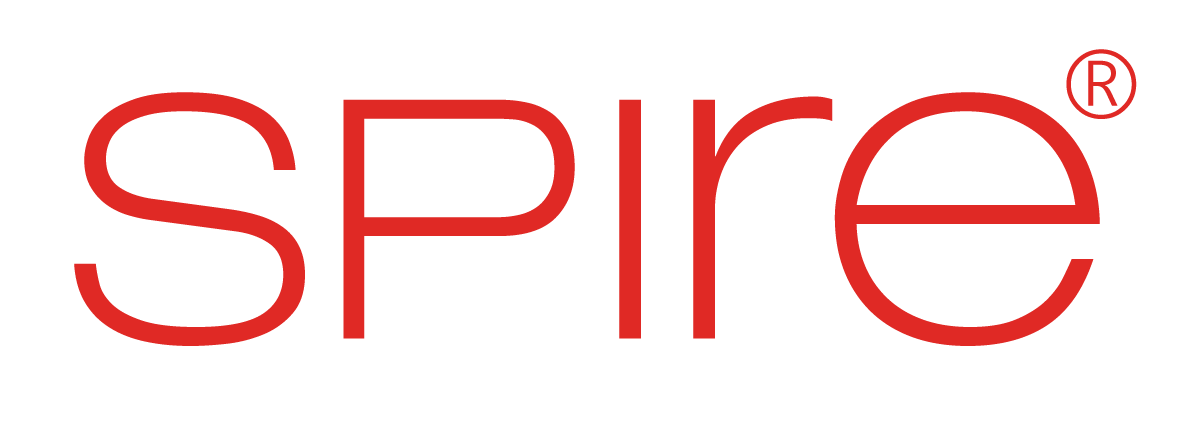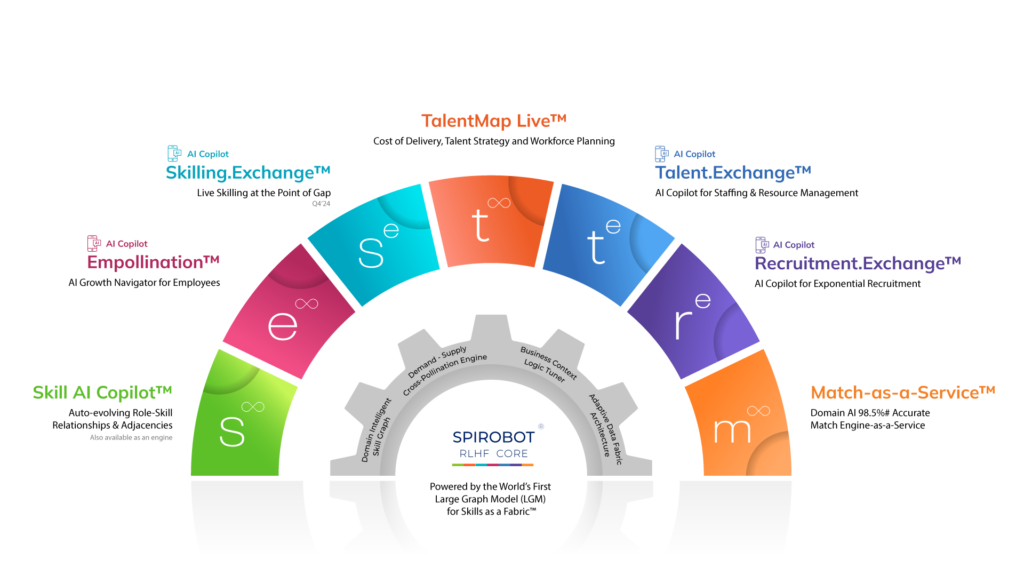The modern business landscape thrives on agility and adaptability. Companies today face constant change: evolving technologies, shifting customer demands, and competitive pressures that demand a highly skilled and adaptable workforce. This reality necessitates shifting from reactive talent management strategies to a proactive approach focused on long-term planning.
Here’s where talent mapping enters the scene as a powerful tool. This blog will discuss how talent mapping can shift organizations from a reactive approach to talent management to a proactive strategy aligned with business goals.
What is Talent Mapping?
Talent mapping is a strategic process of identifying, analyzing, and visualizing your workforce’s skills, knowledge, and experiences.
It involves creating a comprehensive picture of your talent pool, including current skill sets, potential for development, and gaps between existing skills and future organizational needs.
Talent mapping involves creating a comprehensive picture of your talent pool, including current skill sets, potential for development, and gaps between existing skills and future organizational needs.
Why Do We Need Talent Mapping?
In today’s rapidly evolving business landscape, simply filling open positions when they arise is no longer sufficient. A reactive approach to talent management leaves organizations vulnerable to skill shortages, delayed project execution, and missed opportunities. Talent mapping is essential for driving proactive workforce planning and achieving long-term organizational success.
A reactive approach to talent management leaves organizations vulnerable to skill shortages, delayed project execution, and missed opportunities.
Here’s why talent mapping is crucial
- Mitigates Talent Risks: By identifying potential skill gaps and talent shortages, organizations can proactively address these challenges through targeted recruitment, development, or succession planning. This reduces the risk of critical projects stalling due to insufficient qualified personnel.
- Optimizes Workforce Utilization: Talent mapping helps uncover hidden talent within the organization. By understanding employees’ skills and aspirations, organizations can identify opportunities for internal mobility, promoting employee engagement and retention while maximizing talent utilization.
- Enhances Decision Making: Data-driven insights from talent mapping inform strategic decisions related to workforce planning, succession planning, and talent acquisition. It helps organizations allocate resources effectively, prioritize development initiatives, and make informed choices about workforce composition.
- Improves Succession Planning: Talent mapping identifies consistent high performers (CHPs) & high-potential employees and their development needs, enabling organizations to create robust succession plans. This ensures business continuity and maintains organizational knowledge.
- Supports Business Growth: By aligning talent with business objectives, organizations can ensure they have the right people with the right skills to drive growth and innovation. Talent mapping helps identify the skills needed for future roles and enables targeted development initiatives to support business expansion.
- Boosts Employee Engagement and Retention: Employees who see opportunities for growth and development within the organization are more likely to feel valued and engaged. Talent mapping can identify career paths and development opportunities, increasing employee satisfaction and retention.
- Reduces Recruitment Costs: By effectively utilizing internal talent and minimizing skill gaps, organizations can reduce their reliance on external hiring. This can significantly lower recruitment costs and time-to-fill for critical positions.
Significance of talent mapping:
– Mitigates Talent Risks
– Optimizes Workforce Utilization
– Enhances Decision Making
– Improves Succession Planning
– Supports Business Growth
– Boosts Employee Engagement and Retention
– Reduces Recruitment Costs
Talent mapping is not just a tool for HR; it’s a strategic business function. By investing in talent mapping, organizations can gain a competitive advantage, improve operational efficiency, and achieve long-term success.
From Reactive to Proactive: Utilizing Talent Mapping for Strategic Advantage
Talent mapping is the catalyst for transforming your organization’s approach to talent management from reactive to proactive. By systematically identifying, assessing, and developing your workforce, you can align your talent strategy with your business objectives and drive sustainable growth.
Steps to Leverage Talent Mapping for a Proactive Approach:
1. Conduct a Comprehensive Skills Inventory
2. Build a Robust Talent Pipeline
3. Foster a Culture of Internal Mobility
4. Drive Strategic Workforce Planning
5. Measure and Evaluate
Here’s how you can leverage talent mapping to achieve a proactive approach.
1. Conduct a Comprehensive Skills Inventory
A detailed assessment of your workforce’s skills is the foundation of effective talent mapping. This involves:
- Identifying core competencies: Determine the essential and adjacent skills required for successful job performance across various roles.
- Assessing current skill levels: Evaluate employees’ skills and knowledge through performance reviews, assessments, and certifications.
- Identifying skill gaps: Compare the required skills with the existing skill set to pinpoint areas for development.
2. Build a Robust Talent Pipeline
A strong talent pipeline ensures a steady progression of qualified candidates for future roles. Key steps include:
- Identifying high-potential employees: Utilize talent mapping to identify employees with high potential for leadership or specialized roles.
- Creating development plans: Develop tailored development plans for high-potential employees to foster growth and prepare them for future opportunities.
- Building external talent networks: Compare the required skills with the existing skill set to pinpoint areas for development.
3. Foster a Culture of Internal Mobility
Encouraging employees to explore different roles within the organization can increase engagement, skill development, and business performance.
- Mapping career paths: Create clear career paths for different roles to provide employees with a roadmap for their professional development.
- Implementing internal job posting systems: Facilitate internal mobility by allowing employees to apply for open positions within the company.
- Providing development opportunities: Offer training and development programs to help employees acquire new skills and prepare for different roles.
4. Drive Strategic Workforce Planning
Talent mapping is instrumental in aligning your workforce with your business strategy. Key considerations include:
- Forecasting future talent needs: Analyze business trends and industry forecasts to anticipate future skill requirements.
- Identifying critical roles: Determine the roles essential for business success and prioritize talent development efforts accordingly.
- Developing succession plans: Create detailed succession plans for critical roles to ensure business continuity.
5. Measure and Evaluate
To maximize the impact of talent mapping, it’s essential to track key performance indicators (KPIs) and evaluate the effectiveness of your talent strategies.
- Measuring talent acquisition costs: Track the cost per hire and time-to-fill metrics to assess the efficiency of your recruitment processes.
- Evaluating employee retention rates: Monitor employee turnover to gauge the impact of your talent management initiatives on employee satisfaction.
- Assessing skill development outcomes: Evaluating skill improvement and performance outcomes can help measure the effectiveness of training programs and development initiatives.
By following these steps and continuously refining your talent mapping strategies, you can transform your organization into a talent-driven powerhouse capable of achieving its strategic goals.
Spire.AI: A Powerful Partner for Talent Mapping
Spire.AI offers a suite of AI-powered solutions powered by the world’s first LGM that streamline and elevate your talent mapping efforts. Here’s how Spire.AI helps organizations leverage the power of talent mapping:
- Auto-Evolving Role-Skill Framework: Spire.AI provides an LGM-powered auto-evolving role-skill framework that automatically identifies several skill combinations needed for different roles across your organization. This framework eliminates manual skill framework maintenance and updating and ensures your talent map reflects the latest industry demands.
- Automatic AI-generated Employee Skill Profiles: Spire.AI analyzes data from various sources to automatically generate comprehensive skill profiles for a large percentage of your workforce. This reduces manual data entry and provides valuable insights into employee skill sets.
- Career Path Simulation and Reskilling Recommendations: Spire.AI solutions empower employees to explore career paths based on their aspirations and existing skill sets. It also recommends the most effective upskilling or reskilling path to achieve their desired career goals aligned with your business goals. This improves employee engagement and future-proofs your workforce.
- Talent Marketplace: Spire.AI facilitates a robust internal talent marketplace, connecting eligible employees with internal opportunities that align with their skills and aspirations. This reduces reliance on external recruitment and fosters a culture of learning and growth.
- Talent Acquisition: Spire.AI’s AI-powered solutions can automate recruitment processes, optimize candidate screening and shortlisting, ensure cross-pollination across supply and demand, and ensure more qualified applicants for open positions.
By utilizing talent mapping with Spire.AI’s innovative LGM-powered AI solutions, organizations can gain a comprehensive picture of their workforce, bridge skill gaps, and build a future-proof talent strategy that aligns with their evolving business needs.
Conclusion
Shifting from a reactive to a proactive talent management approach is imperative for organizations seeking sustained growth and competitiveness. Talent mapping is the cornerstone of this transformation, providing invaluable insights into your workforce’s capabilities and potential. By understanding your talent landscape, you can optimize resource allocation, enhance decision-making, and foster a culture of internal mobility.
Embracing a data-driven approach to talent management is no longer optional; it’s essential. Spire.AI’s AI-powered solutions offer a powerful arsenal of tools to streamline your talent mapping efforts and unlock the full potential of your workforce. By automating tasks, generating actionable insights, and providing predictive analytics, Spire.AI empowers organizations to make informed decisions and achieve tangible results.
Remember, talent mapping is an ongoing journey, not a one-time event. Continuous monitoring and adaptation are crucial to staying ahead of industry trends and evolving business needs. By investing in talent mapping and leveraging advanced technologies, organizations can build a high-performing, adaptable workforce that drives innovation and delivers exceptional results.
The future of work demands a proactive and strategic approach to talent management. Talent mapping and AI-powered solutions are the keys to unlocking your organization’s full potential and achieving sustainable success.
Frequently Asked Questions
What is talent mapping?
Talent mapping is a strategic process of identifying, analyzing, and visualizing your workforce’s skills and experience. It helps you understand what skills you have, what you need, and where the gaps are.
What is candidate mapping in recruitment?
Candidate mapping is part of talent mapping that focuses specifically on potential hires. It helps you identify the skills and experience you need in future employees.
What is the difference between talent mapping and workforce planning?
Talent mapping is a broader process that identifies your current talent and future needs. Workforce planning uses that information to develop strategies for filling those needs.
What is the talent planning process?
The talent planning process involves:
- Conducting a skills inventory to see what skills your workforce has.
- Building a talent pipeline to identify and develop future talent.
- Fostering a culture of internal mobility to help employees grow within the company.
- Driving strategic workforce planning to align your talent with your business goals.
- Measuring and evaluating your talent strategies to see what’s working.






